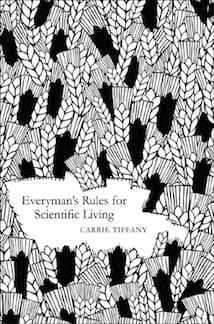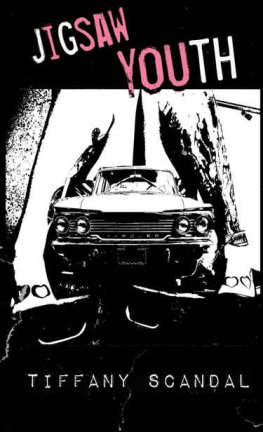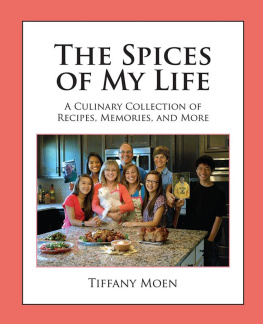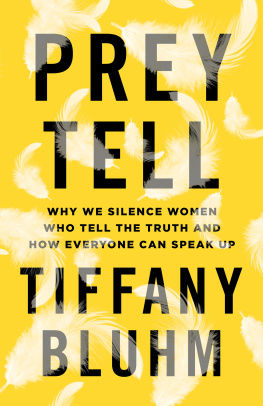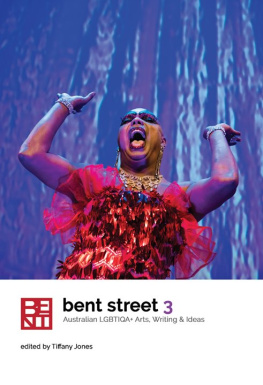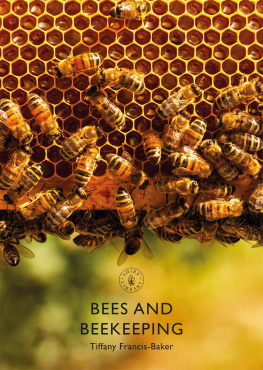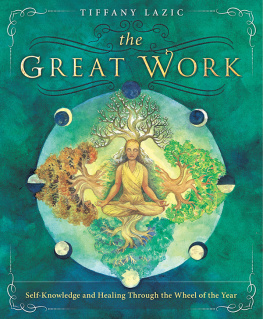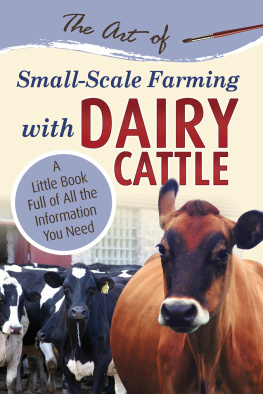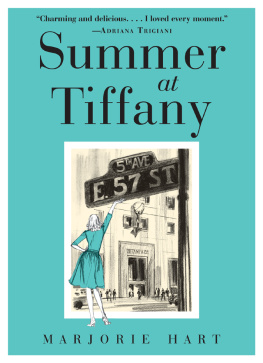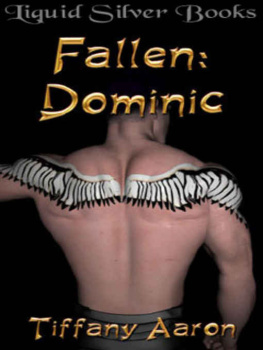EVERYMANS RULES FOR
SCIENTIFIC LIVING
Carrie Tiffany was born in West Yorkshire and grew up in Western Australia. She spent her early twenties working as a park ranger in the Red Centre and now lives in Melbourne, where she works as an agricultural journalist. Everymans Rules for Scientific Living (2005), her first novel, was shortlisted for numerous awards including the Orange Prize, the Miles Franklin Literary Award, the Guardian First Book Award and the Commonwealth Writers Prize, and won the Dobbie Award for Best First Book (2006) and the 2005 Western Australian Premiers Book Award for Fiction. Her second novel is Mateship with Birds.
Also by Carrie Tiffany
Mateship with Birds

The characters in this book are fictitious and any resemblance to real persons, living or dead, is purely coincidental.
First published 2005 in Picador by Pan Macmillan Australia Pty Ltd
This 2012 edition published in Picador by Pan Macmillan Australia Pty Ltd
Level 25, 1 Market Street, Sydney, NSW 2000
This project has been assisted by the Australian Government through the Australia Council, its arts funding and advisory body.
The author gratefully acknowledges the assistance of a Varuna Fellowship.
Copyright Carrie Tiffany 2005
The moral right of the author has been asserted.
Photographs reproduced with the permission of the State Library of Victoria.
All rights reserved. No part of this book may be reproduced or transmitted by any person or entity (including Google, Amazon or similar organisations), in any form or by any means, electronic or mechanical, including photocopying, recording, scanning or by any information storage and retrieval system, without prior permission in writing from the publisher.
National Library of Australia Cataloguing-in-Publication data:
Tiffany, Carrie.
Everymans rules for scientific living / Carrie Tiffany
ISBN 9781742611495
Young women Fiction.
Married women Fiction.
Rural conditions Fiction.
Scientists Fiction.
Farm life Fiction.
Australia Fiction.
A823.4
Designed by Stephen Banham
Typeset by Midland Typesetters
Printed and bound in Australia by Griffin Press
These electronic editions published in 2012 by Pan Macmillan Australia Pty Ltd
1 Market Street, Sydney 2000
Copyright Carrie Tiffany 2012
The moral right of the author has been asserted.
All rights reserved. This publication (or any part of it) may not be reproduced or transmitted, copied, stored, distributed or otherwise made available by any person or entity (including Google, Amazon or similar organisations), in any form (electronic, digital, optical, mechanical) or by any means (photocopying, recording, scanning or otherwise) without prior written permission from the publisher.
Everymans Rules for Scientific Living
Carrie Tiffany
Adobe eReader format 978-1-74334-904-5
EPUB format 978-1-74334-906-9
Online format 978-1-74334-905-2
Macmillan Digital Australia
www.macmillandigital.com.au
Visit www.panmacmillan.com.au to read more about all our books and to buy both print and ebooks online. You will also find features, author interviews and news of any author events.
For TPS, TES & GRT
And with heartfelt thanks to KJS.
Blurb
.
.
.
.
.
.
.
.
.
.
.
.
.
.
.
.
.
.
.
.
.
.
.
.
.
.
.
.
.
THE BETTER FARMING TRAIN BRINGS SCIENCE TO THE MAN-ON-THE-LAND
1934
T here are days of slow chugging through the wheat. I look out of the window at the engine as it rounds a bend. Living on a train is like living inside the body of a snake. We are always leaning into the curves, always looking forwards, or backwards, never around. Here we are arriving at some tiny siding, just a few neat-edged buildings and their sharp shadows. Here we are again, a few days later, pulling away, all of us craning out of the windows, gazing down the long canyon of railway line.
Sometimes a grateful farmer, or his son, will run a length beside us, waving his hat and grinning and calling out, Three cheers for the Better Farming Train, as if we are going to war. In those few days at Balliang East, or Spargo Creek or Bendigo we make a place like somewhere else. Somewhere new.
The children say, Look, a circus, look at the tent, look at the animals.
Time moves differently around us. Our lecturettes, illustrated with lantern slides, show the same farmer, time after time, about his chores. There he is, before breakfast, caring for his dairy herd in the wet hills of Mirboo North. A row of Eaglehawk graziers watch him closely and bray with disbelief at the lush green of the pasture, although the slide is in black and white.
Again, the men say. We want to see it again.
We bring to each town new sizes and shapes and colours. Beasts broader than they are high, cows with giant dangling udders whose teats brush the ground like the fingers of a glove, fleece-laden sheep like walking muffs, wheat grown so high by colourless chemicals it reaches the waist of the tallest man. Our fruits and vegetables on display are large and smooth and perfectly formed. They gleam, inviting touch, and give off a sweet, waxy aroma.
The womens car is at the end. Fourteen cars of stock and science and produce and then us, a shiny afterthought: infant welfare, cookery and home sciences. My colleagues Sister Crock, head of womens subjects, and Mary Maloney, lecturer in cooking complain about our position. Or rather Sister Crock complains. She says it is a question of cinders, when the train turns a corner cinders blow back through our windows into our kitchen, onto my dressmaking dummies, dressed and swaying.
Mary Maloney and I smirk. Because she raises this complaint in the Mallee where we chug along for days, as if drugged, pushing through the endless wheat. There are no corners, no hills, no ridges, no edges to anything. At the Minyip siding I notice that the men of the wheat districts are straight-backed and stiff-necked. Many seem dazed at the sight of us. They are men with no experience of corners.
The cinders are not the real reason Sister Crock complains. Being at the end means that when we have finished our lectures at one town and packed up to travel to the next, we must walk through all of the agricultural cars to the sitting car up front. Sister Crock says when a lady travels she must be seated. She says, Oh lordy, lordy, clapping a white handkerchief to her nose in the pig car.
Each car is a tunnel of smell. The air moves in through open slats, across the beasts, across us walking up the aisles, and then mixes together behind the train into a heady, steamy cloud. Only the animals grazing in the paddocks as we pass can unmingle the odours and reply in loud yearning to a juicy cow or the sharp piss of a colt in his prime.
We jam Sister Crock between us. Mary is on shit alert. She says Jump now, Sister, as a huge Border Leicester ram aims a clod of pellets in front of us. They fall like marbles and we hop about on our toes to avoid them. Sister Crock shakes her head. We have an effect on the animals. Its not just the shit, they moo and bah and grunt and bellow at us, even after weve gone, but perhaps a little more forlornly.
Were starting them up, Mary says, smiling at me. And we are. The cacophony of each car is dulled a little by the chorus of the one before.
The dairy car is next. Mary and I like to linger in dairy implements. She is a real farm girl, not like me. Sister Crock had her on recommendation a nimble girl and a handy cook. Marys father was reluctant to let her go and now he sends messages for her, they follow us down the stalls from dairy to dairy, on a milk cart, on a truck, refreshed at a tiny hotel and then spoken by an awkward man hoisting himself into our womens car.
Next page
